Growing a strawberry garden might be the easiest (and sweetest) thing you ever do. And I’m not saying that just because strawberries are cute. There’s something really satisfying about walking outside, picking a sun-warmed berry, and eating it right there. No washing. No packaging. Just fresh flavor and juicy goodness. In this post, I’ll walk you through how to grow one yourself—no matter where you live, how much space you have, or how green your thumb is.
You don’t need a big yard. You don’t even need a yard at all. Strawberries are great in containers, hanging baskets, raised beds, or tucked into a tiny garden patch. They’re low-maintenance, which is perfect if you’ve got a busy life or haven’t had much success with growing things before. Trust me, this isn’t one of those projects that turns into a time-sucking monster. It’s fun. It’s rewarding. And honestly, it’s delicious.
We’ll go over everything—what kind to plant, where to put them, how often to water, and what to do about pests (because yes, even bugs love berries). I’ll also share some smart ways to make the most of the space you’ve got and give you a few simple tips to help your plants grow healthy and strong. If you’ve ever thought about growing something but weren’t sure where to start, a strawberry garden is the way to go.
By the time you finish this post, you’ll be ready to grow your own strawberries. Whether it’s a porch, patio, or backyard, you’ll have everything you need to get started.
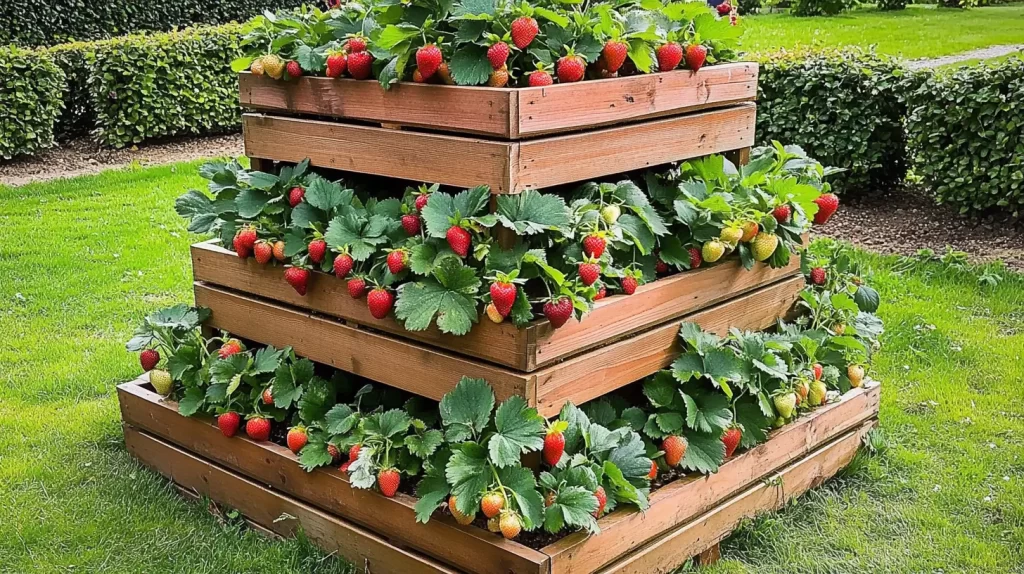
This site includes affiliate links; you can check the disclosure for more details.
Why a strawberry garden is perfect for budget-friendly living
If you’re trying to live more frugally, a strawberry garden makes a lot of sense. It’s a low-cost way to add fresh fruit to your life without spending a fortune at the store.
Let’s be honest—store-bought strawberries aren’t cheap. Especially the organic ones. And half the time, they go bad in the fridge before you even finish the pack. When you grow your own, you’re saving money every time you skip the produce aisle.
Here’s why it’s so cost-effective:
- One-time purchase: A few plants or seeds, some soil, and maybe a pot if needed—that’s it.
- They come back: Strawberries are perennials. They’ll keep producing for a few years before needing to be replaced.
- Make your own starters: Those little runners we talked about? You can plant them and grow even more plants for free.
- Less waste: You pick what you need when you need it. No more slimy, forgotten berries in the back of the fridge.
Think about the cost breakdown:
- A single strawberry plant might cost $3–$5.
- That one plant can produce up to a quart of strawberries each season.
- If you grow ten plants, that’s up to ten quarts of strawberries for around $30.
Compare that to buying strawberries every week. You’ll spend more over the season than you would starting your own small garden.
Other budget-friendly benefits:
- No driving to the store just for fruit
- No paying for plastic packaging
- You get food and a fun hobby
So if saving money is a goal, this checks all the boxes. A strawberry garden is affordable, sustainable, and gives you real value back. It’s a small upfront cost for a long-term reward. And honestly, it’s way more fun than clipping coupons.

The best types of strawberries to grow in your strawberry garden
Not all strawberries are the same. Some give you fruit all summer, while others deliver one big crop. Picking the right type makes a big difference.
There are three main types:
- June-bearing: These give you one big harvest, usually in late spring or early summer. They’re perfect if you want a big batch of berries all at once—for jam, pies, or freezing.
- Ever-bearing: These give you two or three smaller harvests—usually one in spring, one in summer, and one in fall. You’ll get berries over a longer time, but not all at once.
- Day-neutral: These produce fruit steadily throughout the growing season. You won’t get a huge batch, but you’ll have fresh berries almost every week.
If you’re just starting, I suggest ever-bearing or day-neutral. You’ll get more chances to pick berries, and it feels like a better reward for your efforts.
Here are a few favorite varieties to look for:
- Albion: A popular day-neutral type with sweet, firm berries.
- Seascape: Great for warm weather and produces all season long.
- Honeoye: A June-bearing favorite for colder climates.
- Ozark Beauty: Ever-bearing and easy to grow in most areas.
When choosing plants, always check your growing zone. Most strawberries grow well in USDA zones 3 through 10. That covers a lot of areas, but you want to make sure the variety you pick will actually thrive where you live.
The good news? Strawberries are pretty flexible. As long as they get enough sun and don’t sit in soggy soil, they usually do well.
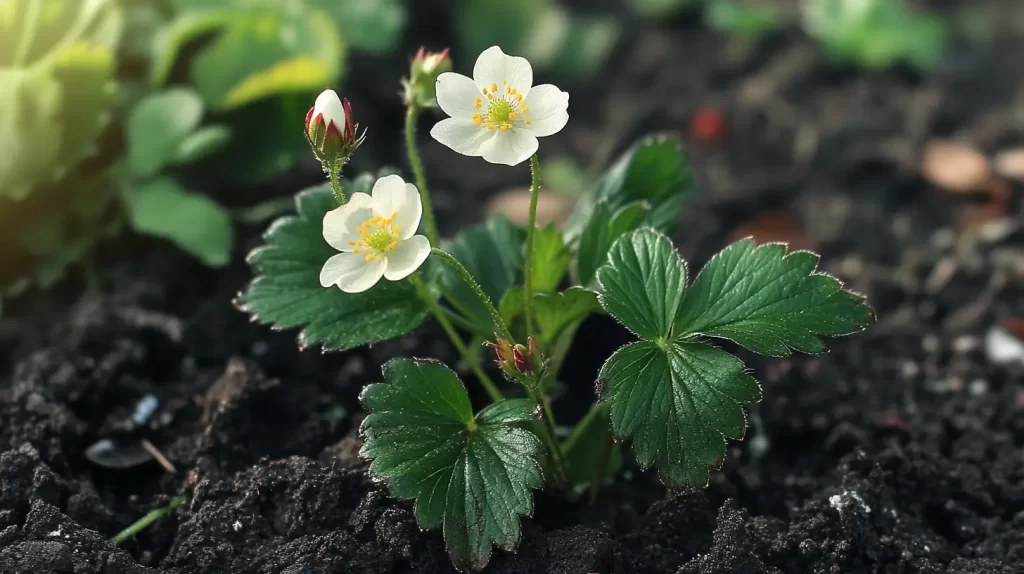
Where and how to plant strawberries for success
Your strawberry garden needs two main things: sun and good drainage. Strawberries love full sun. That means at least six hours a day, but more is even better.
Look for a spot that gets:
- Morning sun (it helps dry the leaves quickly)
- At least six hours of direct sunlight
- Good air flow (this helps prevent mildew)
If you’re growing in a garden bed, raised beds are ideal. They keep the soil warmer and drain better. If you’re growing in containers, make sure the container has drainage holes. You don’t want the roots sitting in water.
Here’s how to plant them:
- Loosen the soil about 8 inches deep.
- Mix in compost or aged manure for extra nutrients.
- Space plants about 12 inches apart.
- Plant the crown (that thick part between the roots and leaves) right at soil level. Not too deep, not too high.
- Water them right after planting.
Mulching helps a lot. Use straw, pine needles, or shredded leaves. It keeps the soil moist, stops weeds, and keeps the berries clean.
And yes, you can absolutely grow a strawberry garden in containers:
- Use hanging baskets, window boxes, or large pots.
- Choose day-neutral or ever-bearing for small spaces.
- Water often, since containers dry out fast.
- Fertilize once a month with a balanced, all-purpose fertilizer.
The key is to avoid letting the soil dry out completely. Strawberries like moisture, just not soggy roots.
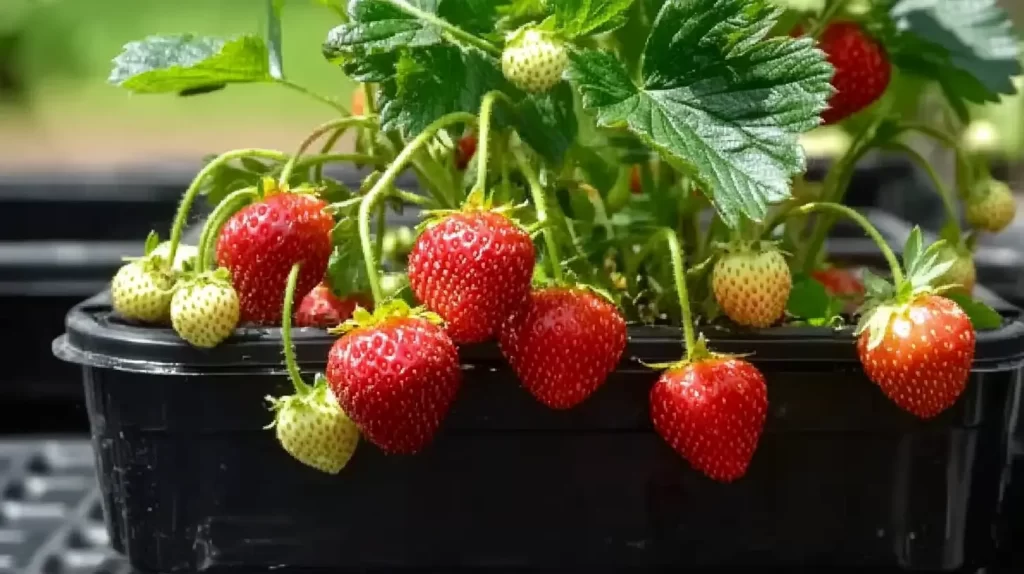
Keeping your strawberry garden healthy and thriving
Once your plants are in the ground, there are a few simple things you can do to keep them happy. You don’t need a fancy setup or tons of experience. Just a little attention and consistency.
Here’s what helps:
- Watering: Strawberries need about one inch of water a week. Water deeply at the base, not the leaves.
- Mulching: Keeps moisture in and weeds out. Replace mulch as needed during the season.
- Fertilizing: Feed your plants after the first harvest (for June-bearing) or every 3–4 weeks (for ever-bearing).
- Weeding: Keep weeds away so your strawberries don’t have to fight for water and nutrients.
Watch for signs of stress like yellowing leaves, stunted growth, or very small berries. These are signs they may need more nutrients, water, or a little shade during hot afternoons.
Here’s what to avoid:
- Overwatering: It leads to root rot.
- Crowding: Air flow is important. Don’t let your plants get too cramped.
- Letting runners go wild: Runners are baby plants that shoot out from the main plant. Pinch them off if you want more fruit and less mess.
Strawberries are perennials, which means they come back year after year. But they do need a little refreshing. Every 2–3 years, replant new starts or thin out your patch to keep it productive.
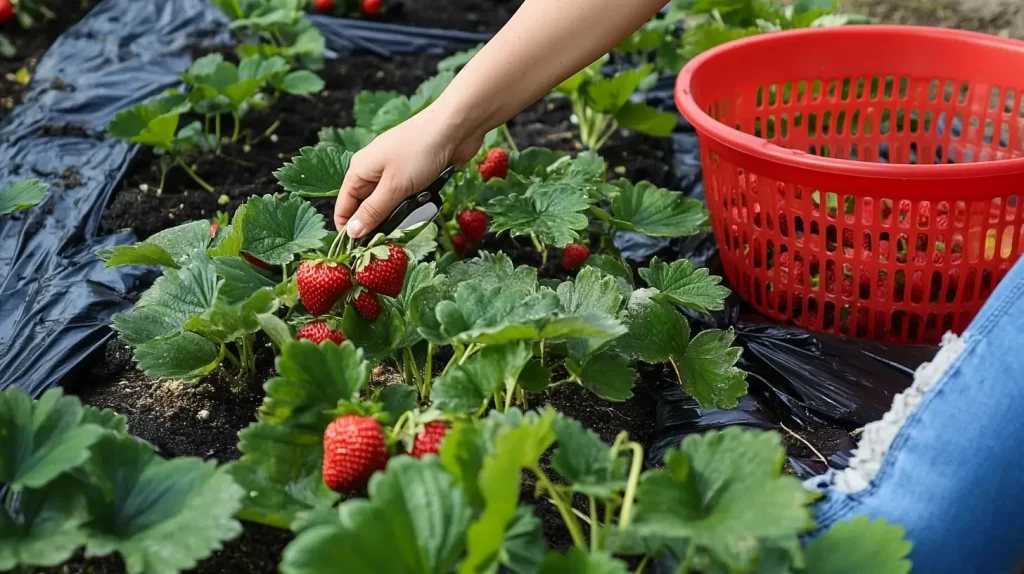
Common pests and how to protect your strawberry garden
Unfortunately, strawberries are just as tempting to bugs and critters as they are to people. The good news is you can manage pests without heavy-duty chemicals.
Some common troublemakers:
- Slugs and snails: They love ripe berries and damp mulch.
- Birds: They’ll peck at berries before you even get a chance.
- Aphids: Tiny insects that cluster under leaves and suck out sap.
- Spider mites: They make webbing and cause leaves to look speckled.
Simple ways to keep pests away:
- Use netting or garden fabric to protect plants from birds.
- Sprinkle diatomaceous earth or crushed eggshells around the base for slugs.
- Encourage helpful bugs like ladybugs to take care of aphids.
- Spray leaves with water to knock off mites and aphids.
- Keep the area tidy and remove any rotting fruit right away.
If you’re using containers, move them around occasionally. This helps break pest cycles and makes it harder for bugs to settle in.
Some folks use DIY sprays made from garlic or hot pepper. These can be useful, but test on a small area first to make sure they don’t damage the plant.
The key is to check your garden often. A quick daily look can help you catch problems early—before they take over.
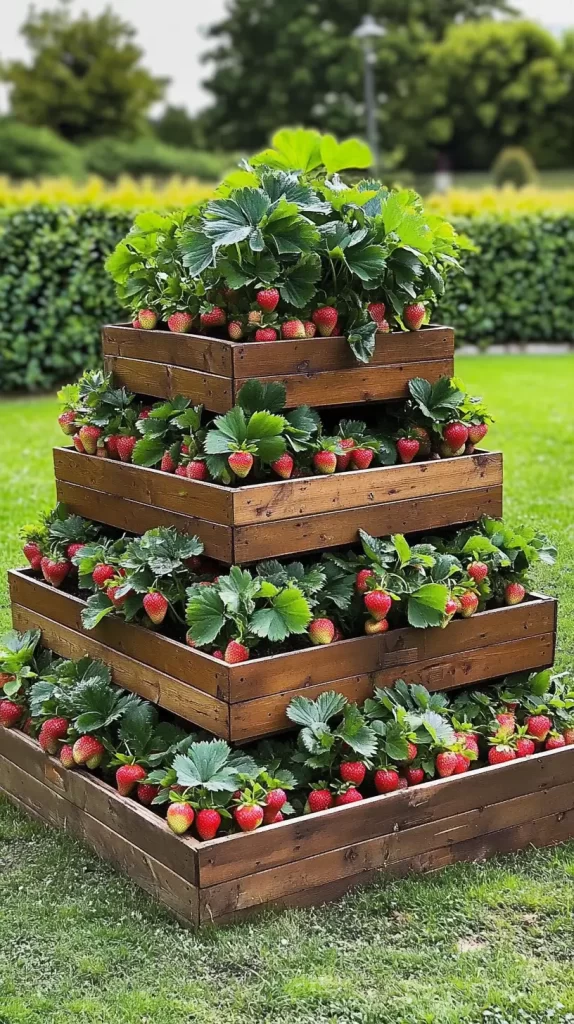
Fun and creative ways to grow strawberries
If traditional garden beds aren’t your thing, no problem. There are so many fun ways to grow a strawberry garden.
Try these ideas:
- Strawberry towers: Stack planters or use a special vertical planter. Great for patios and small yards.
- Gutter gardens: Attach old rain gutters to a sunny fence and plant strawberries inside.
- Hanging baskets: Perfect for balconies or porches.
- Grow bags: Affordable and easy to move around.
You can even mix strawberries into flower beds. They look great spilling over the edge, and the red berries add a pop of color.
If you have kids, try giving each one their own little pot or space to grow strawberries. It’s fun for them and gets them excited about healthy snacks.
A few creative twists:
- Mix strawberry plants with basil or lettuce in the same container.
- Use an old wheelbarrow or vintage drawer as a planter.
- Paint plant markers to look like strawberries for a cute touch.
Growing strawberries doesn’t have to look boring or take up a ton of space. There are endless ways to make it work for your home.
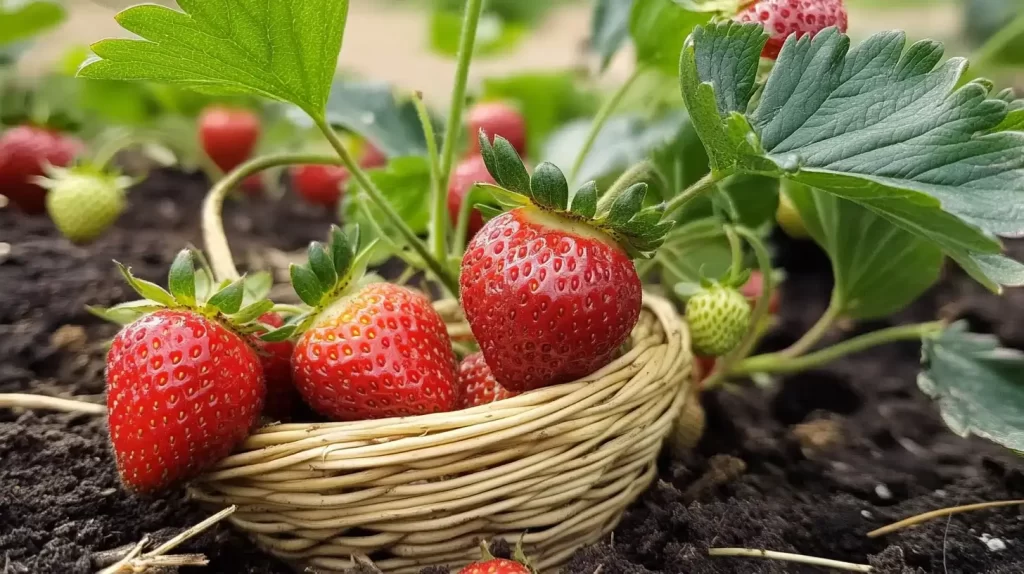
How to harvest and use your strawberries
Harvesting your strawberries is the fun part. You’ll know they’re ready when they’re fully red and smell amazing. Don’t wait too long—birds and bugs will beat you to it.
Here’s how to pick:
- Grab the stem just above the berry.
- Use your fingernails or scissors to snip it off.
- Leave the green top (called the calyx) attached if you’re not eating them right away.
Tips for storage:
- Don’t wash until you’re ready to eat.
- Store in a single layer in the fridge.
- Eat within a few days for the best flavor.
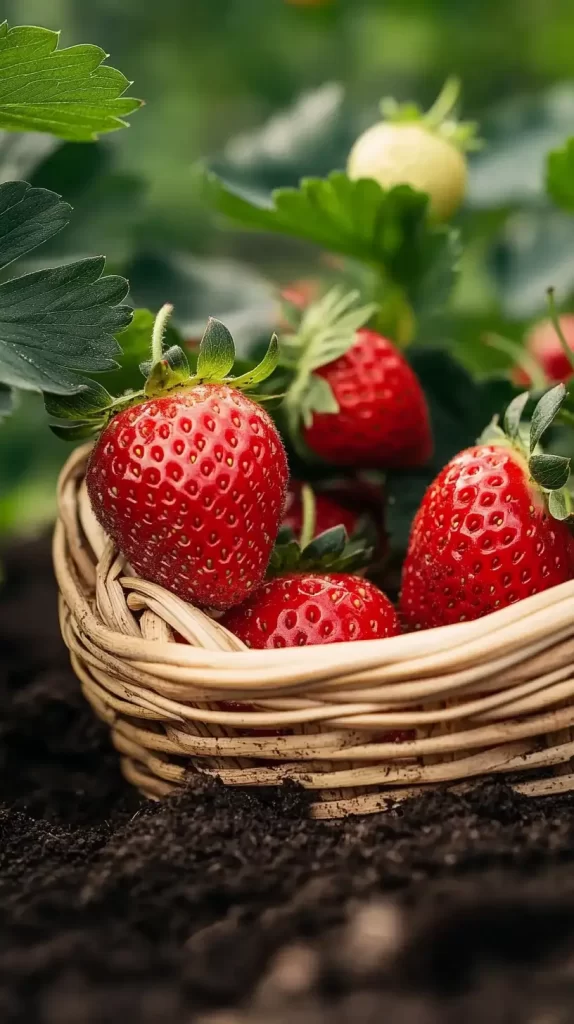
Fresh strawberries are great for:
- Snacking right out of the bowl
- Tossing in salads
- Making smoothies
- Layering in yogurt parfaits
- Baking into muffins, breads, or cakes
- Freezing for later
If you have a big harvest, you can also:
- Freeze whole or sliced strawberries
- Make jam
- Dry them in a dehydrator
- Turn them into syrup or sauce
One bonus tip: freeze your extra berries flat on a tray before bagging. This keeps them from turning into a frozen clump.
Once you’ve grown and tasted your own strawberries, you might not want store-bought again.
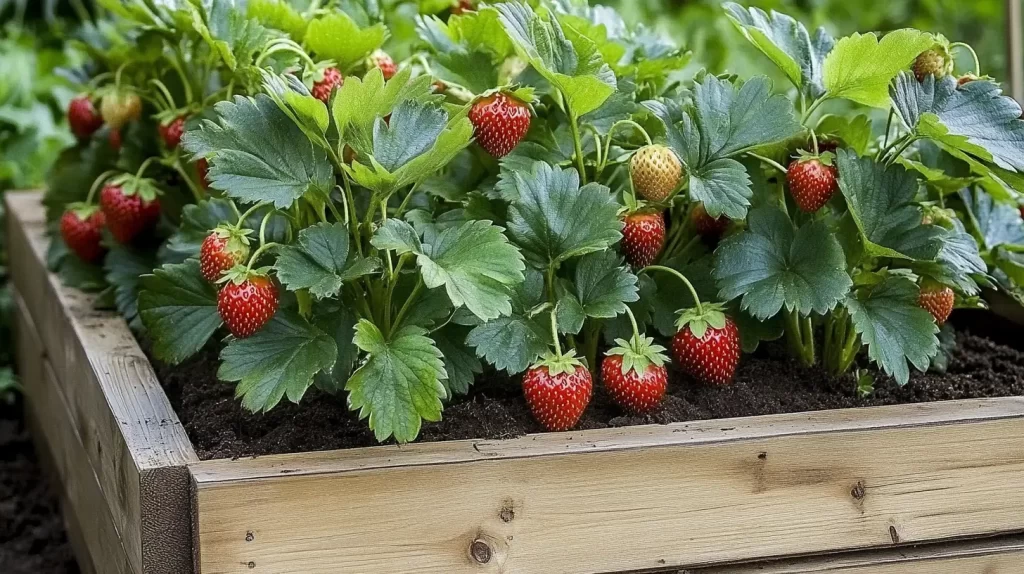
Final thoughts on starting your own strawberry garden
If you’re thinking about growing something easy and rewarding, a strawberry garden is a great place to start. It’s simple to set up, doesn’t take much space, and gives you something sweet to enjoy all season long.
We talked about:
- Picking the best strawberry types for your space
- Where and how to plant them
- How to keep your plants healthy and productive
- Tips for stopping pests before they take over
- Creative ways to grow strawberries in small spaces
- How to harvest, store, and use your berries
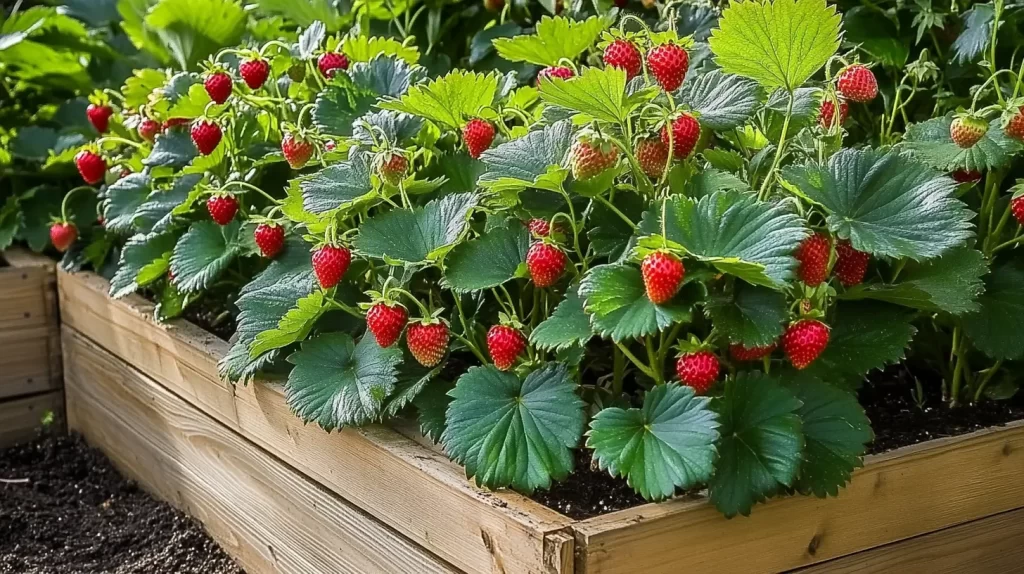
You don’t need fancy tools or expensive gear. Just a little time, some sunlight, and a bit of care.
Even if you’ve never grown anything before, this is doable. A strawberry garden can be your first step into gardening or your new favorite backyard hobby.
And if you’re sharing your progress on Pinterest, it’s the kind of project people love to follow. From cute planters to juicy harvest pics, it’s a win all around.

Here’s what I recommend:
- Start small—one pot is fine
- Pick a type that fits your lifestyle
- Water consistently
- Protect from pests early
- Enjoy every bite you grow
Once you taste your first homegrown berry, you’ll get it. It’s not just about fruit. It’s about doing something with your hands, watching it grow, and sharing it with people you care about.
Your strawberry garden could become a new favorite thing. So why not give it a try?






